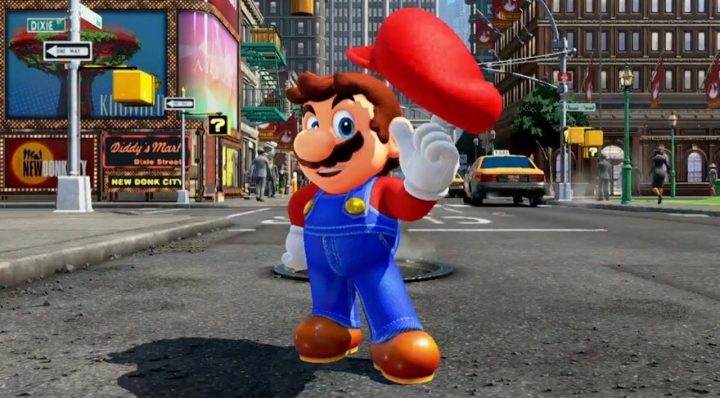Nintendo has long been known for its expansive range of high-quality, nostalgic tunes, creating everything from the inquisitive piano sounds of The Legend of Zelda: Breath of the Wild to the tear-jerking leitmotifs found throughout the soundtrack of Pokémon Mystery Dungeon. While Nintendo sometimes releases official soundtracks of its games, the majority of its music can only be found within the games themselves, which makes it difficult to listen to a favorite song. To fill the gap, some creators have taken it on themselves to upload songs, soundtracks, and entire collections of Nintendo music to platforms like YouTube in order to make it more easily accessible by fans.
But another thing that Nintendo is known for is its ruthless copyright protection tactics. Game music uploads on YouTube are no exception, as many creators have been dismayed to find out throughout the years. A recent rise in copyright claims and takedown notices has many creators questioning how fans will be able to access otherwise hard-to-find soundtracks and songs that they’d normally need to boot up their consoles for.
If the company insists on keeping YouTube and other sites free of its music, it must make them more easily available to eager fans — not just for money or nostalgia, but for preservation.
Mired in copyright

Creators and Nintendo music enthusiasts have been uploading the company’s music to YouTube for others to listen to for nearly two decades. The videos are occasionally monetized, meaning that creators can make money off of YouTube’s ad program, but oftentimes they aren’t. Some creators upload single songs that they enjoy, while others create playlists with Nintendo music or upload an entire game’s soundtrack in order to make it easier to access. A single search for “relaxing Nintendo music” yields over eight million results on Google, many of them compilations or playlists on YouTube designed for, well, relaxing.
Nintendo expressly forbids users from uploading its game soundtracks to platforms like YouTube in its Game Content Guidelines for Online Video & Image Sharing Platforms, regardless of whether the content is monetized or not. In the site’s FAQ, the guide states, “Mere copies of Nintendo promotional trailers, tournaments, music soundtracks, gameplay sequences, and art are outside the scope of the Guidelines.” Creators can also run into legal issues when they upload these soundtracks, particularly when they re-upload them after they’ve already received a takedown notice or copyright strike.
YouTube creator and Nintendo music uploader GilvaSunner found this out the hard way. On January 30, they reported that they had received 1,300 takedown notices from Nintendo, which resulted in the removal of much of their channel’s content. Three days later, on February 2, Nintendo removed another 2,200 videos from GilvaSunner’s channel. In response, GilvaSunner deleted their channel and their Twitter account. One of their last tweets read, “I want to thank you for the 11+ years of support (or more if you followed me before this account) and the many nice messages you share with me. It’s been truly amazing to see the VGM scene grow so much! Please keep supporting the composers and community!”
The sounds of nostalgia
GilvaSunner is not the only content creator stuck in a bog of takedown notices. “I do think [Nintendo’s takedown efforts] have increased more,” says ShadowAtNoon, a Twitch streamer and Nintendo playlist maker, in an interview with Digital Trends. “For me, it happened in December [of last year] and January. Like, half my channel is gone now.” Shadow explains that several of her friends, who also upload Nintendo music, have been hit with an increased amount of copyright claims and takedowns in the last few months.
Shadow has transitioned to Twitch streaming and has publicly stated that she won’t be making playlists as frequently as she used to. “When I first started on Twitch, [the takedowns] weren’t that bad,” she said. “Obviously Nintendo would not allow me to monetize that content, but the takedowns didn’t really start until after I was doing Twitch. … Nintendo didn’t strike until the last year or so, and then it was always in waves of, like, 20 or 30 videos at a time.” Today, Shadow’s YouTube channel contains only a fraction of the playlists it used to contain: Videos with titles like “Nintendo smooth jazz music to sip your coffee to” and “No thoughts, head empty || Nintendo music” alongside other gaming content.
The removal of these videos affects more than just YouTube creators and users. A decade ago, game developer Brian Lee created the Hourly Animal Crossing Music Page, a website that plays music from Nintendo’s life simulation series based on a user’s system settings. While Lee doesn’t upload the soundtracks himself, his page uses embedded YouTube videos uploaded by other creators to provide the music. Animal Crossing is unique in that it has a different song for every hour of the day, which inspired Lee to create the page. “I think the gameplay has a special quality where you’re busy and relaxed at the same time, which is great for using as background music to put you in that mindset,” he tells Digital Trends.
“It’s a moral gray area, but I think it’s wonderful that people are able to preserve and share this content going back decades that would otherwise be ‘legally’ inaccessible.”
Lee also noted that takedown requests seem to be more common for newer soundtracks. “It seems like the videos for the older games more often disappear from the uploader’s account being deactivated, while the songs from the newer games are more likely to be [removed due to] copyright takedowns,” he says. While Lee has never received copyright claims or takedown notices from Nintendo — “which I assume is due to how I implemented the site [with] YouTube” — every time an Animal Crossing soundtrack video is removed from YouTube, he must manually find a new video and connect it to the site.
Shunning streaming
As Nintendo soundtracks are removed from YouTube, it’s becoming increasingly difficult to listen to the company’s music, particularly when it comes to old or obscure titles. Nintendo does not upload its soundtracks to Spotify, YouTube, or other popular music services. Occasionally it will produce physical soundtracks, but those are rare and are often exclusive to Japan.
One of the few exceptions to the company’s music practices was the launch of the Pokémon DP Sound Library, a web-based archive of all the music and sounds from Pokémon Diamond and Pearl. This site, which was announced days after GilvaSunner received their first round of 1,300 takedown notices, allows users to listen to and even download nostalgic tracks from Pokémon’s fourth generation. Notably, content creators can also use the library’s sounds and music for non-commercial purposes, including background music in non-monetized YouTube videos. There’s a lot of legal jargon on the page, and not all of it is clear, but this is one of the first times that Nintendo has officially allowed fans to download and use music from some of its games.
Announcing the Pokémon DP Sound Library! 🎶
All the music you love from the original Pokémon Diamond and Pokémon Pearl games is now available to listen to AND download for use in personal video and music creation.
🎧 Tune in: https://t.co/jtypxqVG5o pic.twitter.com/5r3rTtmcjn
— Pokémon (@Pokemon) February 2, 2022
Even so, the web player isn’t ideal. It’s fairly buggy, and it’s not great at what it does. It’s worth noting that most people don’t look to specific websites when they want to listen to music, nor do most people download individual songs and tracks anymore. Music streaming from the likes of Spotify and Apple Music has taken over the music industry in the last several years. As much of a pleasant oddity that the Pokémon DP Sound Library is, it’s disappointing to see that Nintendo still wants to enforce an iron grip over how its music is accessed.
Grooves for the future

Both Shadow and Lee expressed a desire for Nintendo to make its soundtracks more accessible to the average listener. “The people that upload Nintendo soundtracks don’t monetize them. We just want [them] available on a public platform. There’s clearly a market for this,” says Shadow. “Their music is so famous, and it’s such a part of the nostalgia. More so than any other franchise, I’d say. I don’t understand why they aren’t making their music available.” Many creators aren’t making money off of their uploads. Instead, they want to share the music and playlists that bring them joy.
“It’s a moral gray area, but I think it’s wonderful that people are able to preserve and share this content going back decades that would otherwise be ‘legally’ inaccessible,” says Lee. There’s no good way to listen to many of these songs without booting up the games they come from; in some cases, certain tracks can’t be accessed after a game is completed, making it impossible to listen to old favorites. Some of these old games are also being lost to history, prompting some to see uploading Nintendo music to YouTube as an act of preservation.

When asked if Nintendo will ever do anything to help content creators and playlist makers, Shadow is hopeful, but she has her doubts. “I’ve been scorned in the past,” she says. “They’re notorious for not treating their community well. I’m hopeful, but not expectant.” She doesn’t mind when other creators re-upload her playlists to YouTube as long as they give her credit. “I want [the playlists] to be free and available to everyone. I didn’t make money off of it, so it’s all good.”
Nintendo has a massive back catalog of music, and going through it to list it all on a streaming service like YouTube or Spotify would certainly take time. If single creators like GilvaSunner can sift through it all and upload thousands of tracks on their own, though, the Big N can certainly do the same thing. Knowing the glacial pace at which Nintendo operates and the company’s philosophy of repurposing old, “withered” technology in favor of new steps, it’s likely that we won’t be hearing Mario or Zelda tunes on streaming services for a while.
The video game music community is a strong one. It’s a group that’s prompted endless numbers of music uploaders like GilvaSunner, remixers and record labels like GameChops, content creators like ShadowAtNoon, and developers like Brian Lee to create fun, innovative content based on Nintendo’s uniquely nostalgic tunes. Fans around the world feel strongly about the company’s music, and it’s a shame that there’s not an easier, more comprehensive way to listen to it. That’s the message I got the most from Shadow and Lee: Nintendo, please do something.



